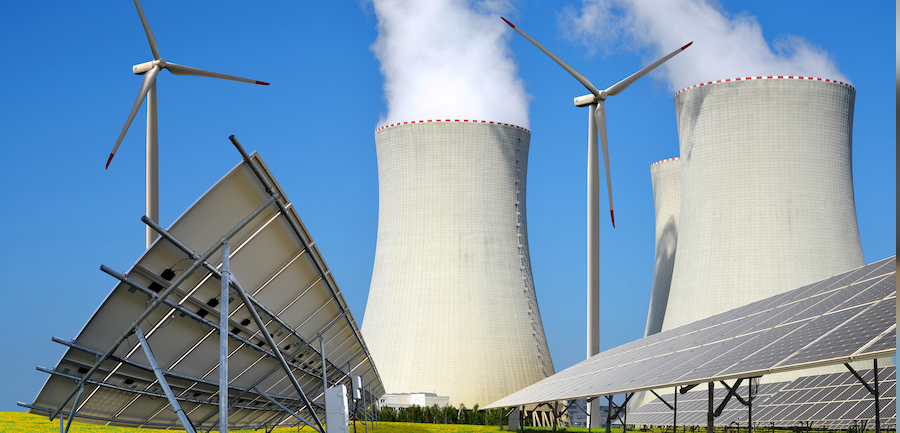
Could these non-carbon sources of power be the answer to the UK’s energy problems? Nuclear and wind power both have their pros and cons. Let’s find out more.
The UK is experiencing an unprecedented energy crisis. Due to problems on the supply and demand sides, the wholesale price of energy has never been higher. As a result, consumers are beginning to see their bills rise by massive amounts, leading to considerable cost of living problems. The government are looking at all available options to alleviate these issues. Two possible solutions (on a long-term basis) are investing in nuclear and wind power, thereby lessening our reliance on imported oil and gas.
There are advantages and disadvantages to both nuclear and wind power. In this article, we’ll weigh them up and try to find out which one is best.
Examples of investment
The government is putting its weight behind nuclear and wind power as the answer to the ensuing energy crisis.
In October 2021, it announced a new funding model which aims to attract more private investment and lower the cost of financing nuclear power stations. Previously, investors would only receive a return when the power station began to generate electricity. With the new model, taxpayers will contribute part of the cost, meaning investors can take a lower yet more reliable return from the start of the construction project. While consumers end up contributing more than before, it is expected that in the long run, they will benefit through cost savings and lower bills.
Thanks to funding ideas like this, in January 2022, the government was able to announce a £100 million contribution to a new nuclear power station in Suffolk called Sizewell C. It is a near replica of another power station currently under construction, Hinckley Point C in Nottinghamshire.
Wind power has long been a focus for the current government. It has helped clear the path for many offshore wind projects in the Irish Sea. However, it has always shied away from favouring new wind farms on land, citing their impact on the local environment. But, there are signs that this view is changing, with the Prime Minister himself saying he wants to ramp up wind power.
The question is, are any of these sources of energy the right solution to the country’s energy problems. Let’s look at both of them in turn.
Nuclear energy – advantages and disadvantages
There are several advantages to nuclear energy over the existing ways we generate power.
Firstly, nuclear power is a carbon-free energy source. When the country is trying to get to net-zero carbon, moving towards nuclear power would be a great help. Next, all you need to generate nuclear power is a nuclear power station, which takes up a relatively small area of land. Once your power station is up and running, it can consistently generate power, regardless of weather, unlike some other power sources.
The disadvantages are that while nuclear power may be carbon-free, it is not a renewable source. This is because you need uranium to generate nuclear power, which is a finite resource. Also, constructing a nuclear power station is a massive upfront cost. For example, the estimated cost of Sizewell C is around £20 billion.
Finally, nuclear power has a bad name, especially among generations who have lived through atomic disasters. While technical and safety standards are much higher in the 21st century, there will always be that nagging doubt. Nuclear waste is still a by-product of nuclear power generation, which will need to be dealt with.
Wind power – advantages and disadvantages
Just like nuclear energy, wind power has its pros and cons.
Wind power is not just carbon-free power; it’s totally renewable. It comes from the wind, which is free, and would be happening anyway whether we generate power with it or not. The latest wind turbines are built to generate power efficiently, and once a wind turbine is up and running, it needs very little maintenance. Offshore wind turbines take up space that is not being used by anyone else, and most of them cannot be seen from land.
On the other hand, wind turbines are not perfect. The major problem is that turbines need wind to make them turn. If there is no wind, they can’t turn, and no power is generated. It means that wind power is unreliable, and not ideal for basing a country’s energy strategy around.
Wind turbines may be cheap to run, but they are expensive to set up, especially offshore. But, many people think onshore wind turbines are noisy and unsightly, so they object to them being put up near their homes. Finally, wind turbines can be a threat to flying wildlife such as birds and bats, who may fly into them and injure themselves.
The case for change
Both nuclear power and wind power have their pros and cons. But, which is best. Unfortunately, we will have to sit on the fence on this one.
What is clear is that we cannot carry on the way we’re going, at the mercy of volatile energy markets and enemy states like Russia, who can manipulate prices. We also need to do something about carbon emissions.
The current strategy of investing in both energy sources seems like a sensible one, but we can always do more. We will wait to see what happens next.
